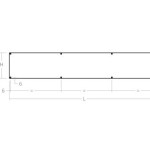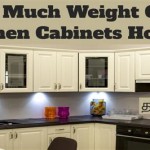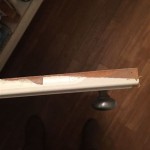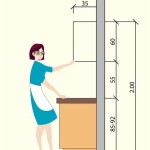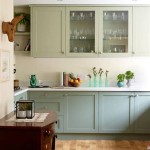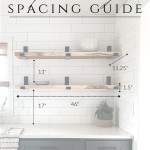Are Most Kitchen Cabinets Solid Wood? A Detailed Examination
The question of whether most kitchen cabinets are constructed from solid wood is a common one for homeowners considering renovations or new builds. Solid wood cabinets are often associated with high quality, durability, and a classic aesthetic. However, the reality of cabinet construction is more nuanced, involving a variety of materials and techniques. This article will explore the different types of materials used in cabinet construction, the prevalence of solid wood versus other options, and the factors that influence a homeowner's choice of cabinet materials.
The term "solid wood" typically refers to lumber milled directly from trees, such as oak, maple, cherry, or pine. This type of wood is often prized for its natural grain patterns, warm tones, and potential for longevity. However, using solid wood throughout an entire cabinet structure presents certain challenges, including cost, susceptibility to changes in humidity, and potential for warping or cracking over time.
Therefore, while solid wood cabinets are available, they often represent a higher-end option and are not necessarily the most common choice for all homeowners. The widespread use of engineered wood products, combined with design considerations and budget constraints, has led to a more diverse range of materials being utilized in kitchen cabinet construction.
Understanding Different Cabinet Construction Materials
To accurately assess whether most kitchen cabinets are solid wood, it is crucial to understand the range of materials commonly employed in their construction. These materials can be broadly categorized as solid wood, plywood, particleboard, and medium-density fiberboard (MDF). Each material has its own set of advantages and disadvantages, influencing its suitability for different parts of the cabinet.
Solid wood, as previously mentioned, offers aesthetic appeal and potential durability. It is often used for cabinet doors, face frames, and decorative trim. However, solid wood's tendency to expand and contract with changes in humidity can lead to problems in larger, unsupported panels. This is why it's frequently used in smaller components or in conjunction with engineered wood products for stability.
Plywood is an engineered wood product made by layering thin sheets of wood veneer glued together with the grain running in alternating directions. This cross-graining provides significant strength and stability, making plywood an excellent choice for cabinet boxes, shelves, and other structural components. Plywood is less prone to warping than solid wood and offers good resistance to moisture, although it can still be damaged by prolonged exposure to water.
Particleboard is another engineered wood product made from wood chips and resin, compressed and formed into sheets. It is a relatively inexpensive material and is often used for cabinet boxes and shelves, particularly in budget-friendly options. However, particleboard is less durable than plywood and is highly susceptible to water damage, which can cause it to swell and crumble. Its low density also makes it less effective for securely holding screws and fasteners.
Medium-density fiberboard (MDF) is also an engineered wood product, but it is made from finer wood fibers and resin than particleboard. This results in a denser, smoother, and more stable material. MDF is commonly used for cabinet doors, drawer fronts, and paint-grade cabinet components because of its smooth surface, which accepts paint well. It is also less prone to warping than solid wood. However, like particleboard, MDF is susceptible to water damage and is heavier than plywood.
The Economics of Cabinet Materials
The cost of materials plays a significant role in determining the prevalence of solid wood versus other options in kitchen cabinet construction. Solid wood is generally the most expensive material, due to the cost of lumber, the labor involved in milling and finishing it, and the waste generated during the manufacturing process. This increased cost is reflected in the price of solid wood cabinets, making them a less accessible option for many homeowners.
Plywood, while more expensive than particleboard or MDF, offers a good balance of cost, durability, and stability. This makes it a popular choice for cabinet boxes, providing a strong and reliable foundation for the entire cabinet structure. The cost of plywood can vary depending on the species of wood used for the veneer and the quality of the construction.
Particleboard and MDF are the least expensive options, making them attractive choices for budget-conscious homeowners. However, the lower cost comes with trade-offs in terms of durability, water resistance, and overall quality. Cabinets made primarily of particleboard or MDF may not last as long as those made with solid wood or plywood, and they may require more frequent repairs or replacements.
The economic considerations often lead to a mix-and-match approach to cabinet construction, where different materials are used for different parts of the cabinet to optimize cost and performance. For example, a cabinet might have solid wood doors and face frames, plywood sides and back, and MDF shelves. This combination allows manufacturers to offer cabinets with the aesthetic appeal of solid wood while maintaining structural integrity and keeping costs manageable.
Design and Construction Techniques
Beyond material costs, design and construction techniques also influence the choice of cabinet materials. The design of a cabinet can impact the structural demands placed on the materials, and certain construction techniques are better suited to specific materials.
For example, cabinets with large, flat panels, such as contemporary slab-style doors, are often made with MDF. This is because MDF provides a smooth, stable surface that is less likely to warp than solid wood. The smooth surface also provides an ideal base for paint or laminate finishes, creating a clean and modern look.
Traditional cabinet designs, on the other hand, may incorporate more solid wood elements, such as raised-panel doors, intricate moldings, and decorative trim. These designs often rely on the natural beauty and workability of solid wood to create a classic and elegant aesthetic.
Construction techniques, such as joinery methods, also play a role in material selection. Solid wood cabinets often feature traditional joinery techniques, such as dovetail joints, mortise-and-tenon joints, and tongue-and-groove joints. These techniques provide strong and durable connections that can withstand the stresses of everyday use. Engineered wood products, such as plywood and MDF, may be joined using screws, nails, or adhesives, which are often quicker and less expensive than traditional joinery methods.
The combination of design and construction techniques ultimately dictates the optimal material choice for each component of the cabinet. This approach allows manufacturers to create cabinets that are both aesthetically pleasing and structurally sound, while also meeting the needs of a diverse range of homeowners.
In summary, while solid wood cabinets are a desirable option, they are not necessarily the most common type found in kitchens today. Engineered wood products such as plywood, particleboard, and MDF offer a more cost-effective and structurally sound alternative that is used more frequently in the manufacture of kitchen cabinets.

Are Solid Wood Cabinets Worth The Money Cabinet Now

Are Solid Wood Cabinets Worth The Money Cabinet Now

8 Pros And Cons Of Solid Wood Cabinets Choice Cabinet

Best Wood For Kitchen Cabinets Cabinet Materials Custom

8 Pros And Cons Of Solid Wood Cabinets Choice Cabinet
What S The Best Material For Kitchen Cabinets In Usa
Solid Wood Cabinets Timeless Elegance For Your Home

The Best Contemporary Kitchen Designs For Solid Wood Kitchens Cabinets Information Guides

Top 10 Characteristics Of High Quality Kitchen Cabinets Premier Kitchens And

8 Pros And Cons Of Solid Wood Cabinets Choice Cabinet
Related Posts

